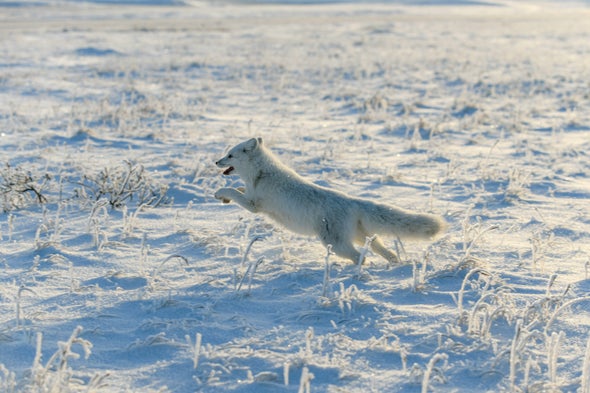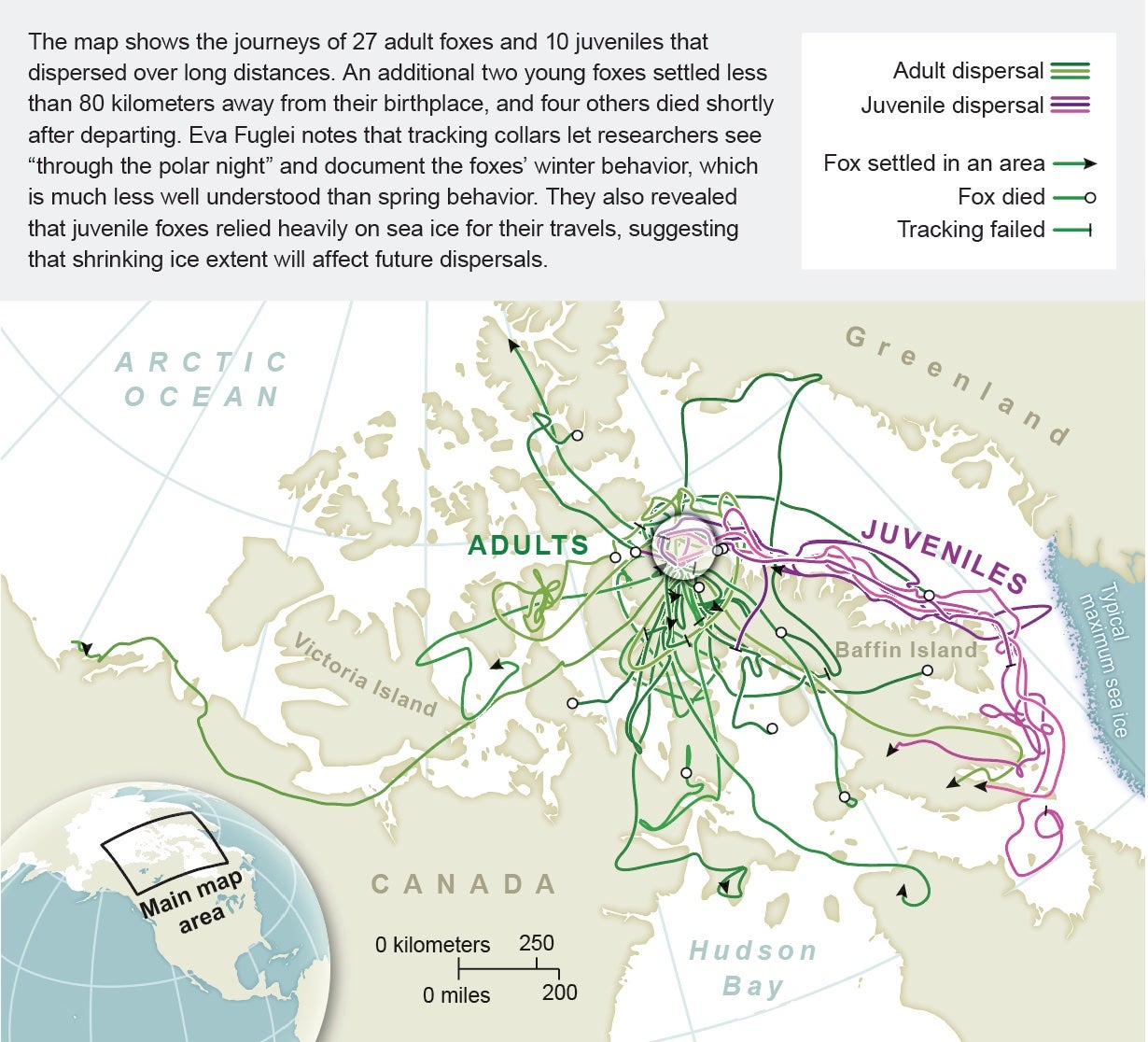Researchers show how tiny Arctic foxes travel thousands of kilometers for space—revealing potential disease pathways
Thank you for reading this post, don't forget to subscribe!
“We knew Arctic foxes could go far,” says University of Quebec ecologist Dominique Berteaux, who has led an Arctic fox–tracking project for 20 years. “But we didn’t know whether this was a rare behavior or just how far they’d go.” Indigenous communities have described the small foxes traversing entire continents, Berteaux adds, and widely separated fox populations have similar genetics. There are various likely reasons for such trips: parents often chase juvenile foxes away from their birth territory to keep competition low, for example, and mature foxes can be pushed out by stronger individuals.
For a recent study in Royal Society Open Science, Berteaux’s team collared and tracked 170 foxes from 2007 to 2021. Among them, 37 attempted long-distance relocation journeys. Berteaux had expected the vast majority of migration attempts to be unsuccessful. Predators, starvation and other dangers make the treks risky, he says: “They try to find another spot, but it is difficult.” Of the 37 long-haulers, however, 13 successfully settled in new territory while their tracking collars were working.

“These small animals are so impressive,” says Eva Fuglei, a biologist at the Norwegian Polar Institute, who was not involved in the study. “With a satellite tag, we can follow the footsteps of the Arctic fox. It’s fascinating to see how fast they walk.”
A surprising 20 percent of the epic trekkers were adults, upending assumptions that only younger foxes could handle such travel. This insight is especially relevant to scientists studying “the spreading of zoonoses—diseases—which can be very dangerous to humans,” Fuglei says.
Previously, researchers had assumed adult Arctic foxes were unlikely disease vectors because of less movement. The new study shows, however, that a significant number of hardy older foxes can and do cross continents, potentially bringing parasites and illnesses with them.
This article was originally published with the title “Far-Ranging Fox Trot” in Scientific American: Science News, Expert Analysis, Health Research , , 16 ()
doi:10.1038/scientificamerican0523-16
ABOUT THE AUTHOR(S)
Rebecca Dzombak is a freelance science writer who covers Earth sciences and the world in the Anthropocene.

